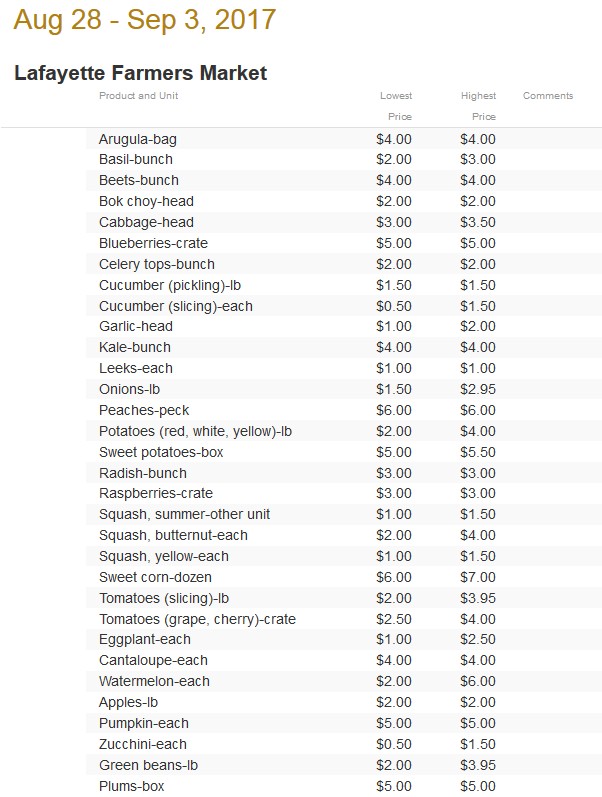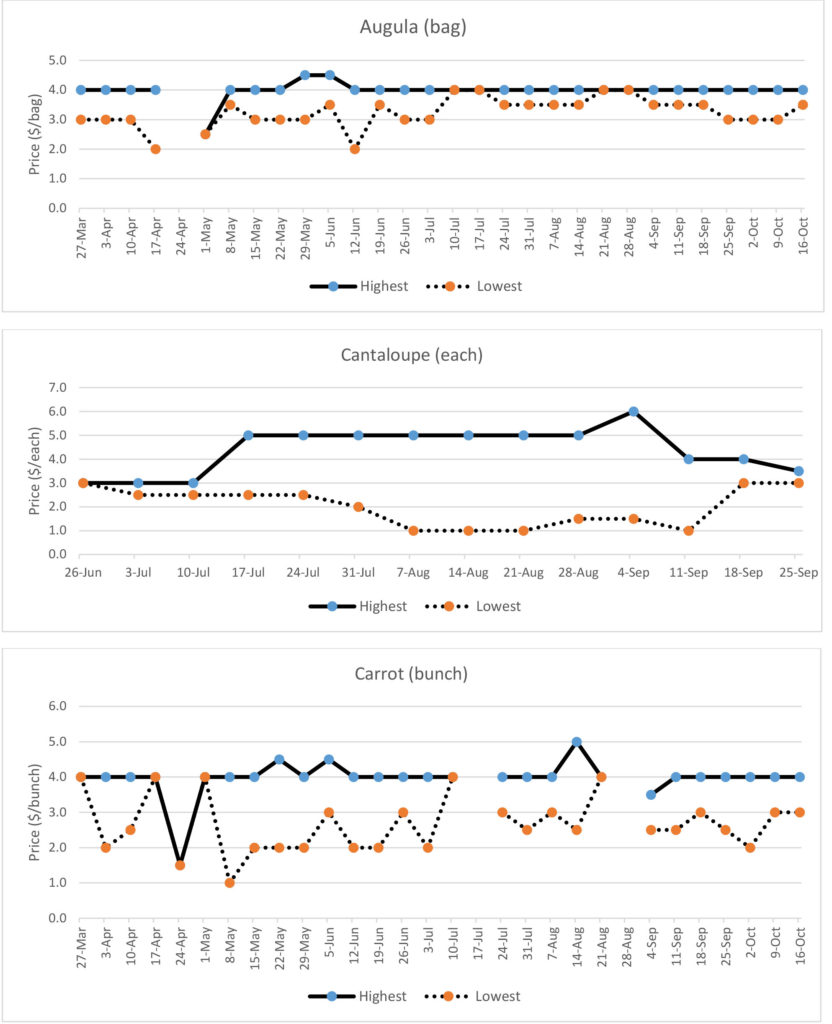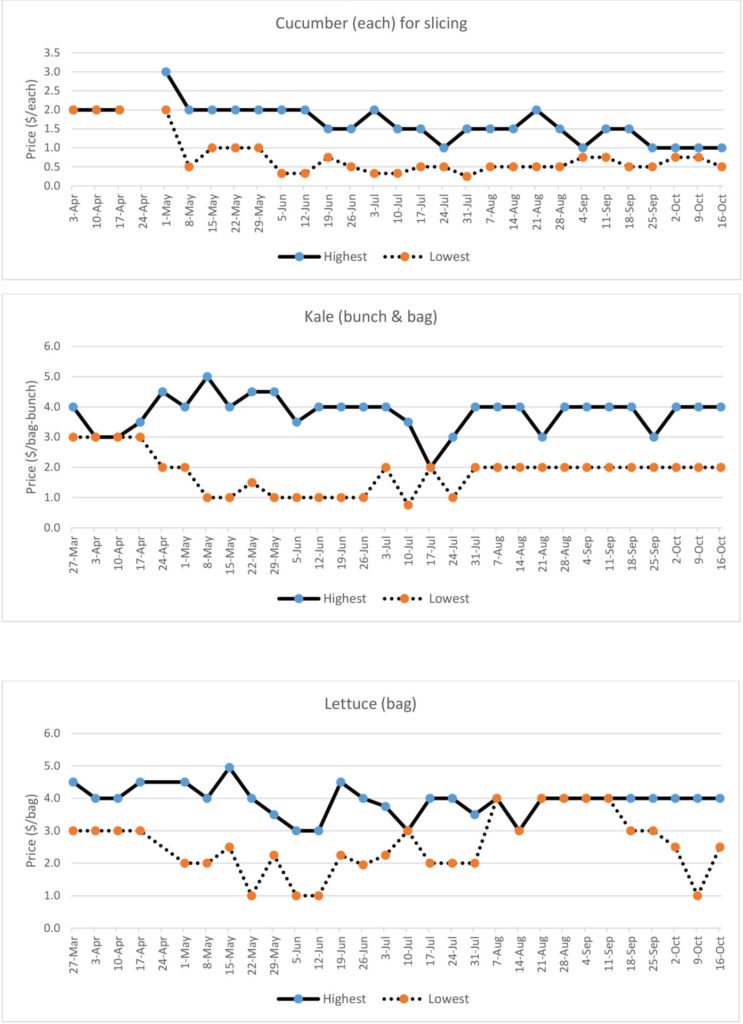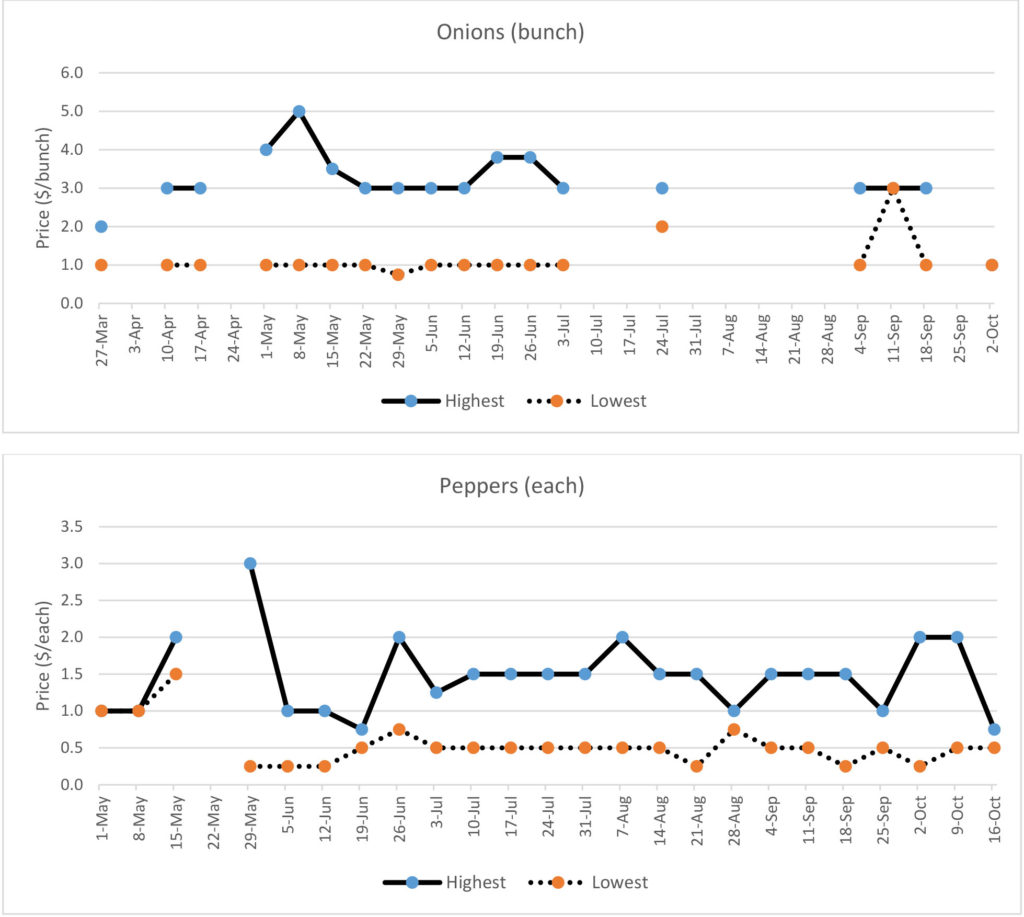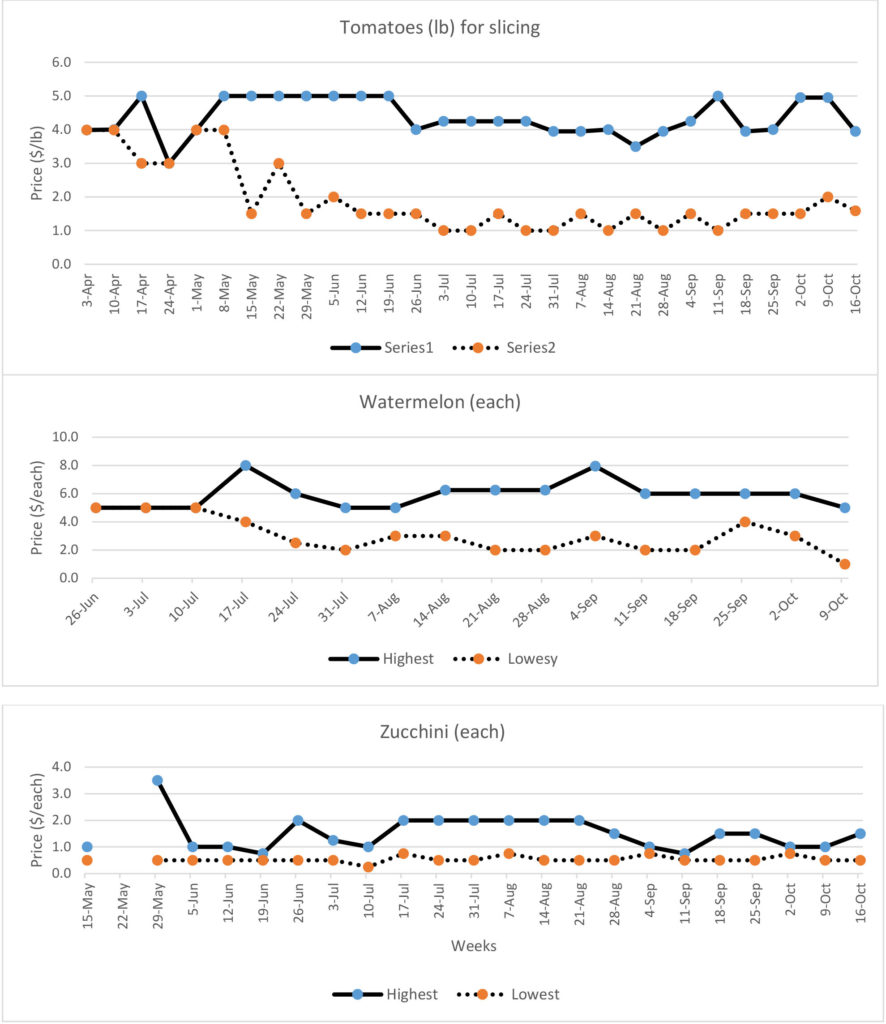Farmers markets are a centerpiece of local food systems. These markets connect farmers with consumers and provide important economic benefits. While Indiana farmers can take advantage of the opportunities from selling directly to consumers, they face a dearth of information regarding pricing and marketing strategies.
Information about pricing and product quality requirements are generally available for farmers who produce enough volume to enter wholesale markets. Larger farmers selling wholesale can access these weekly reports to define their marketing strategies, assess investment in new technologies, and assure profitability. On the other hand, Indiana’s small farmers have faced a lack of pricing and sales information regarding Indiana’s 155 farmer’s markets. Thus, Indiana farmers have had to rely on farmers market prices from neighboring states or walk down the market aisles to define prices, assess potential profitability, and determine market feasibility.
The Horticulture Business Extension Program at Purdue University team started collecting fruit and vegetable prices and sales in Indiana farmers markets. The goal of our program is to collect foundational data and establish long-term pricing reports for Indiana specialty crops sold at farmers markets. The Horticulture Business Program is also developing marketing tools (such as enterprise budgets) and training farmers and extension agents to support the economic viability of the Indiana specialty crop industry. Together, these resources can help farmers make production and marketing decisions for the upcoming year and evaluate potential earnings.
The specialty crop industry includes operations that grow fruit and vegetable, tree nut, dried fruit, horticulture, floriculture, and nursery crops. Thus, our project provides farmers, buyers, and communities with the prices of many different fruits, vegetables, and ornamentals that highlight the economy and gastronomy of Indiana. The reports can help farmers, farmers markets, buyers, and communities make decisions based on real-time pricing information. The weekly price reports can be found at: www.purdue.edu/hla/sites/hortbusiness/price-reports.
The project
We collaborate with farmers market managers and county extension educators in several Indiana counties to collect and publish weekly prices of produce sold through Indiana farmers markets. The project has been funded by Purdue AgSEED and supported by the Indiana Vegetable Growers Association (IVGA).
We started our project with the Bloomington Winter Farmers Markets in January 2017, and we are currently publishing prices from seven farmers markets during the summer market season. Summer season prices include markets located in Lafayette and West Lafayette (Tippecanoe County), Plymouth and Culver (Marshall), Bloomington (Monroe), Warrick (Warrick), and Kokomo (Howard). Figure 1 illustrates the counties where we are collecting farmers market prices. Prices are recorded once a week per market and published on the Horticulture Business Program website.
Our price report website has over 1,500 page views since its release in February 2017. Page visitors may use a tablet, smartphone, or computer to access our information. Around 64 percent of the visitors are from United States (967); of those, 23 percent are from Indiana.
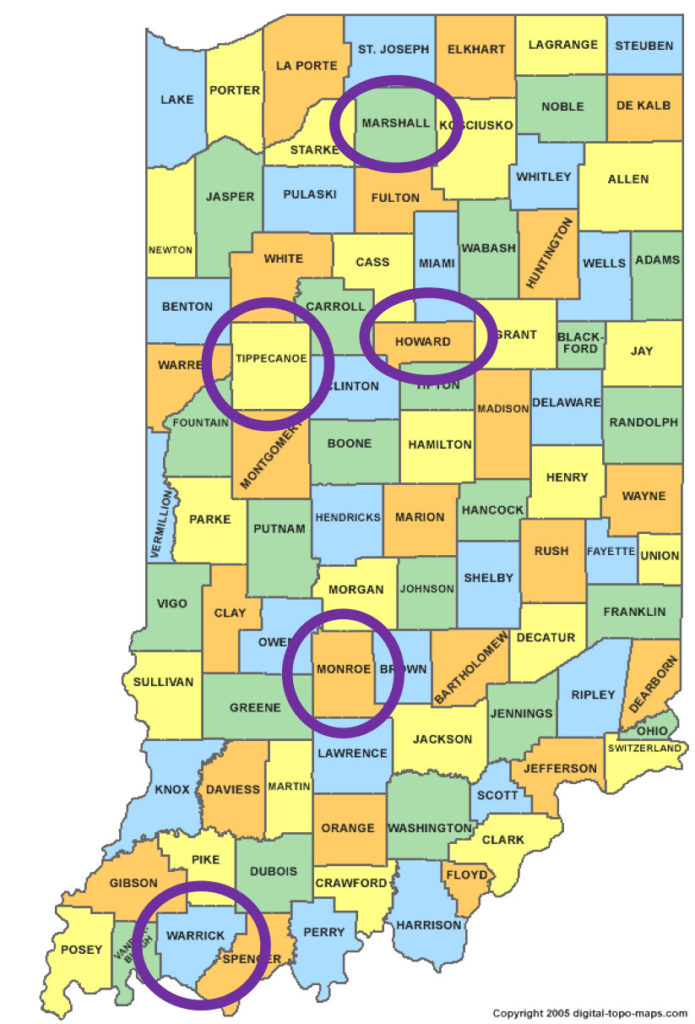
Figure 1. Counties in Indiana where our project collects farmers markets prices for the summer season.
Using Price Reports to Make Informed Decisions
Our reports provide farmers with price benchmarks to help them evaluate how their pricing strategies compare to other farmers selling locally. By looking at our weekly reports, farmers can assess the range of prices available at the farmers market for a specific week. In other words, farmers can observe the lowest and highest prices of produce sold per week at farmers markets. At the end of each pricing report, the website also summarizes the lowest and highest prices by item and across all farmers markets.
Figure 2 illustrates the Lafayette Farmers Market report for the week of August 28 to September 3, 2017. The figure lists all the produce, the lowest and highest prices, and any appropriate comments. For example, Figure 2 shows that farmers in the Lafayette market sold arugula by the bag for $4, basil by the bunch between $2 and $3, beets by the bunch for $4, and bok choy by the head for $2. Farmers who use this information should be able to assess if selling their arugula for $4 will be enough to cover their costs and assure profitability. We can also see that slicing tomatoes were sold by the pound (between $3.95 and $4.25) and by the box ($9.50) in the Lafayette market.
The Benefits of Pricing Reports
Our pricing reports provide farmers with the prices for a wide variety of fruits and vegetables sold in Indiana farmers markets. Some of the benefits of using pricing reports are:
- Farmers can compare produce prices across markets (urban versus rural), presentations (selling by bag versus by pound), and seasons (selling in winter versus in summer). This information can help farmers assess the potential of increasing or decreasing prices depending on their market access, location, and time of the year.
- Farmers can select market channels for their products. A farmer may decide that selling in a rural market closer to the farm may generate enough revenue to meet their profitability goals and give them more time with their families compared to selling in more distant urban markets. On the other hand, farmers may find that selling to a neighboring farmers market brings as much revenue or more than selling to a wholesaler or retailer.
- Farmers have more information to understand competition in farmers markets by looking at the price ranges of produce and the supply of one or more vendors for specific crops.
- Farmers can determine the market window of their crops. Market window is the period of time when produce and prices are available for a specific market. Our price reports show that asparagus availability in Bloomington started on mid-April ($5 per pound) until mid-June ($3.50 per pound).
- Farmers can assess the economic feasibility of season extension technologies and new crops by considering when products reach the market (market window) and at what price. For example, farmers can determine if investing in high tunnels to extend the production season or new specialty crops is profitable given last year’s market prices.
- Farmers can evaluate the return on investing in valued-added strategies by assessing if cut-washed-bagged produce has received price premiums when compared to produce sold by pound. For example, a head of lettuce tends to be sold by $1.50, while a bag of washed lettuce tends to be sold by $4.
- New and beginning farmers can use our price reports and integrate them with enterprise budgets to estimate potential farm profitability
Weekly Prices
Below we display the weekly prices of 20 specialty crops sold in Indiana farmers markets. Some graphs show a gap in prices, which was due to the lack of those products in the market at the specific week.
This report displays farmers markets price data collected by the Horticulture Business extension program at Purdue University. Additional crops, specific market prices, and alternative unit prices can be obtained in the weekly price reports on our website http://www.hort.purdue.edu/hortbusiness.
